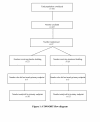House dust mite barrier bedding for childhood asthma: randomised placebo controlled trial in primary care [ISRCTN63308372]
- PMID: 12079502
- PMCID: PMC116603
- DOI: 10.1186/1471-2296-3-12
House dust mite barrier bedding for childhood asthma: randomised placebo controlled trial in primary care [ISRCTN63308372]
Abstract
Background: The house dust mite is the most important environmental allergen implicated in the aetiology of childhood asthma in the UK. Dust mite barrier bedding is relatively inexpensive, convenient to use, and of proven effectiveness in reducing mattress house dust mite load, but no studies have evaluated its clinical effectiveness in the control of childhood asthma when dispensed in primary care. We therefore aimed to evaluate the effectiveness of house dust mite barrier bedding in children with asthma treated in primary care.
Methods: Pragmatic, randomised, double-blind, placebo controlled trial conducted in eight family practices in England. Forty-seven children aged 5 to 14 years with confirmed house dust mite sensitive asthma were randomised to receive six months treatment with either house dust mite barrier or placebo bedding. Peak expiratory flow was the main outcome measure of interest; secondary outcome measures included asthma symptom scores and asthma medication usage.
Results: No difference was noted in mean monthly peak expiratory flow, asthma symptom score, medication usage or asthma consultations, between children who received active bedding and those who received placebo bedding.
Conclusions: Treating house dust mite sensitive asthmatic children in primary care with house dust mite barrier bedding for six months failed to improve peak expiratory flow. Results strongly suggest that the intervention made no impact upon other clinical features of asthma.
References
-
- British Thoracic Society, National Asthma Campaign, Royal College of Physicians of London. The British guidelines on asthma management: 1995 review and position statement. Thorax. 1997;52:S2–S8. - PubMed
Publication types
MeSH terms
Associated data
LinkOut - more resources
Full Text Sources
Medical


